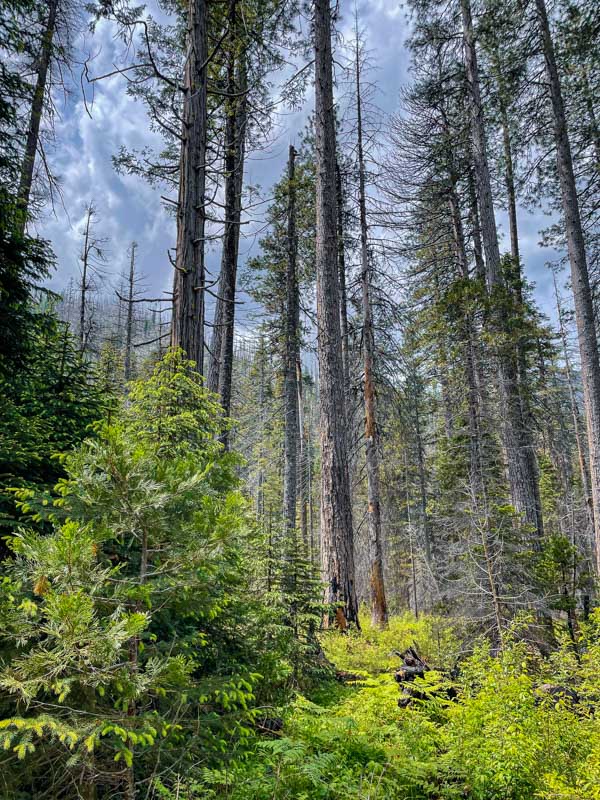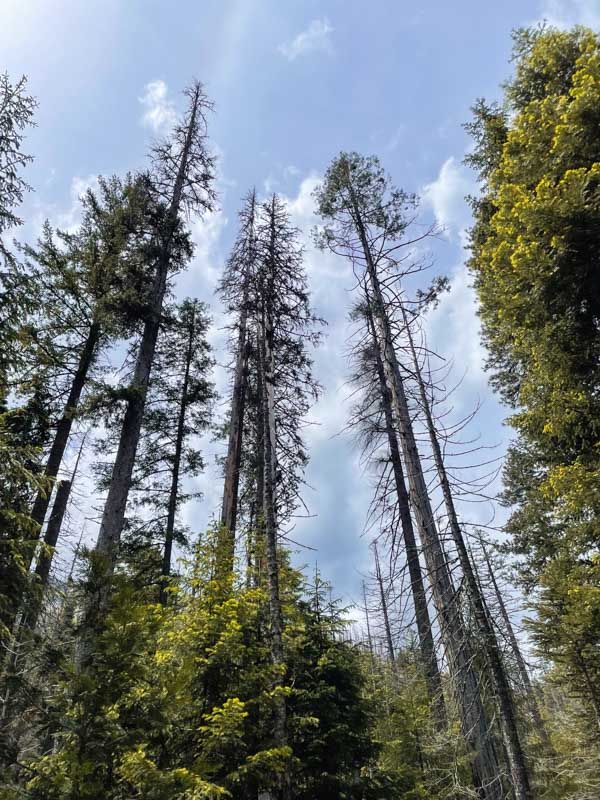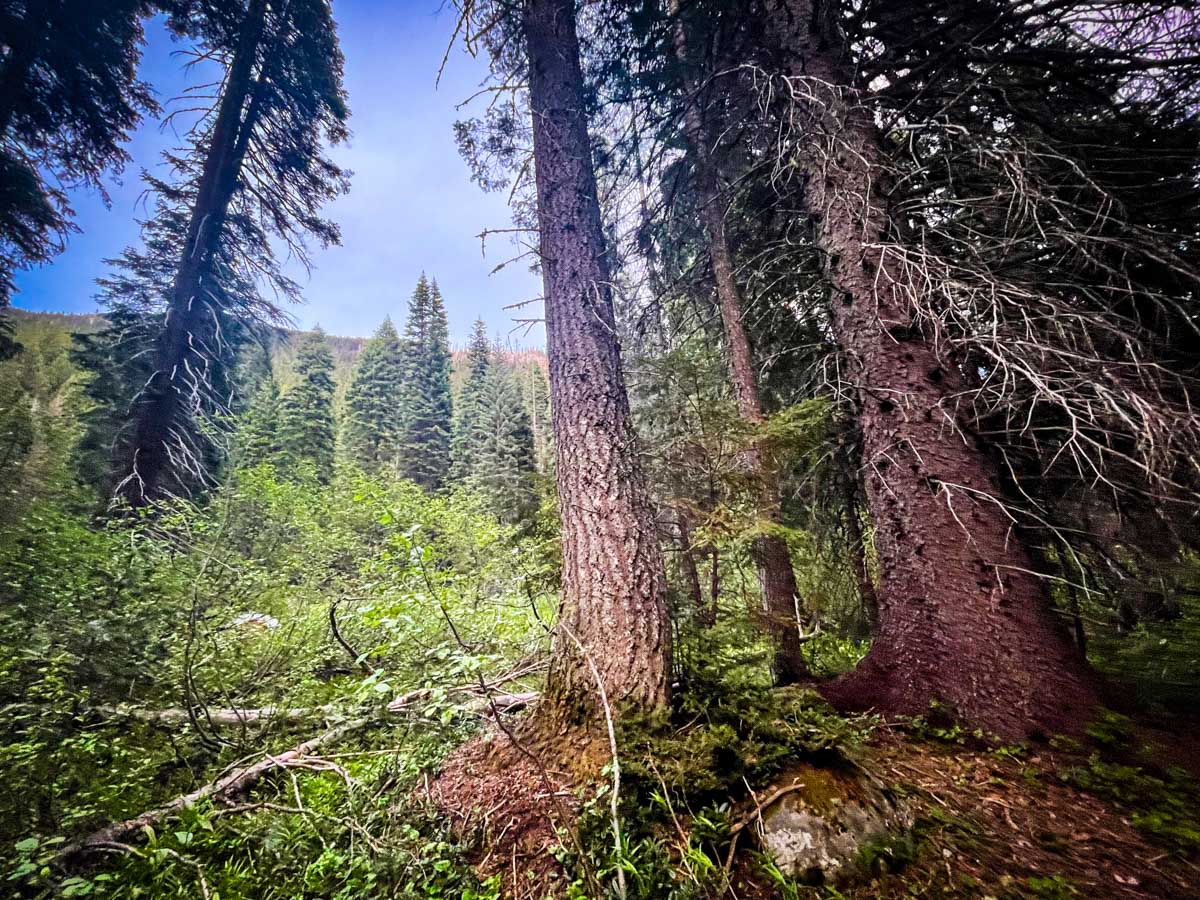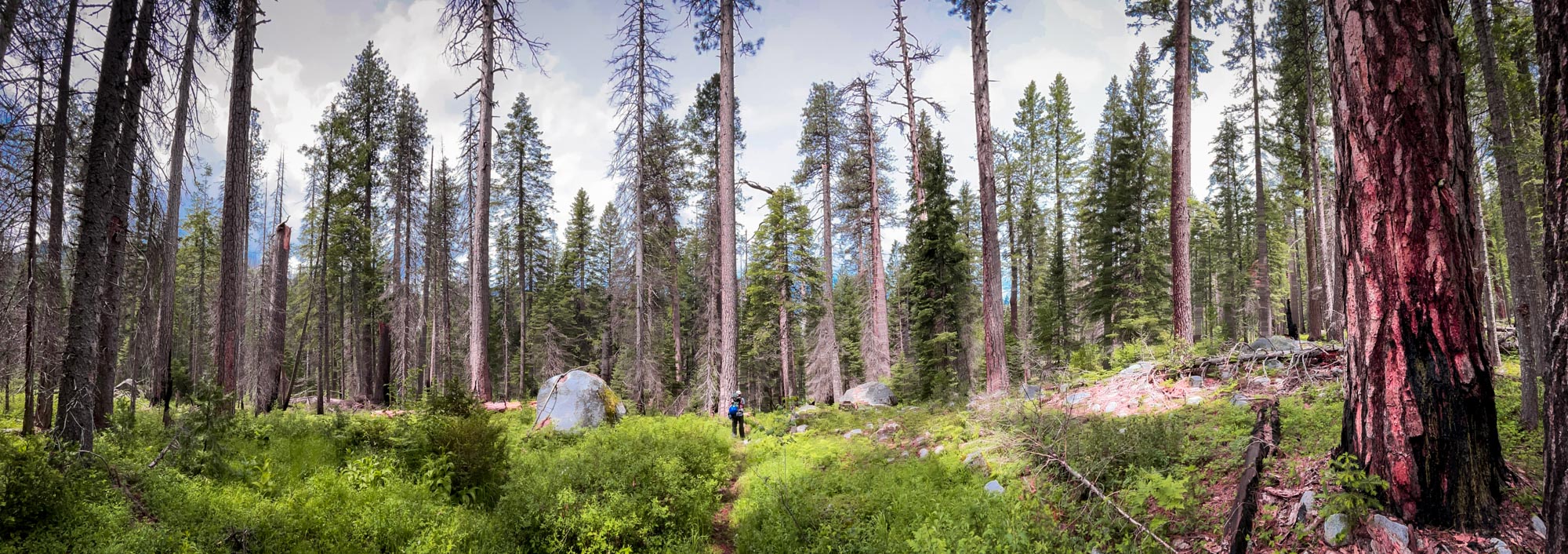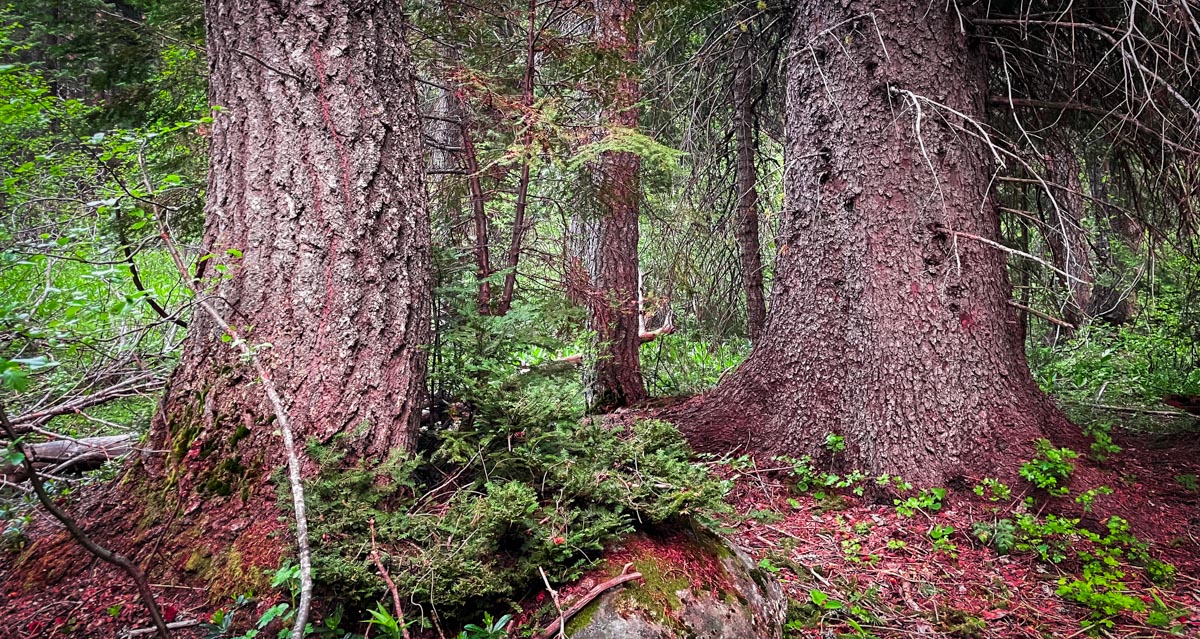Engelmann spruce and subalpine fir form one of the most common forest associations in the Rocky Mountains and parts of the Cascades. In California, this is one of our rarest subalpine forest vegetation alliances. These two species occur in only a few places in the state–often not even together unlike in the rest of their range. We recently visited the Russian Wilderness for a trail working trip and I became re-familiarized with these two wonderful tree species.
Subalpine fir (Abies lasiocarpa)
Subalpine fir is a common and distinctive tree of the upper elevations of the Cascades and, there, easily recognized from a distance because of its narrow, tapering crown. From verdant meadows the spire-like crown crescendos against the sky where tree clumps create conifer parapets, framing high peaks. Pure stands of subalpine fir are common from central Oregon northward to the Yukon in all coastal mountain ranges. However, this species is one of California’s rarest conifers, found in only a few select locations within the Klamath Mountains at the southern extent of its range along the Pacific slope. In California it favors igneous moraines of the Salmon Mountains where conditions mimic those of the Cascades, with cool summers and cold winters with deep snow pack. In these microsites, subalpine fir rarely achieve a pure-stand emergence that is common further north but Russian Creek offers an example of an extensive, pure stand from the trailhead to just below Waterdog Lake adjacent to the creek.
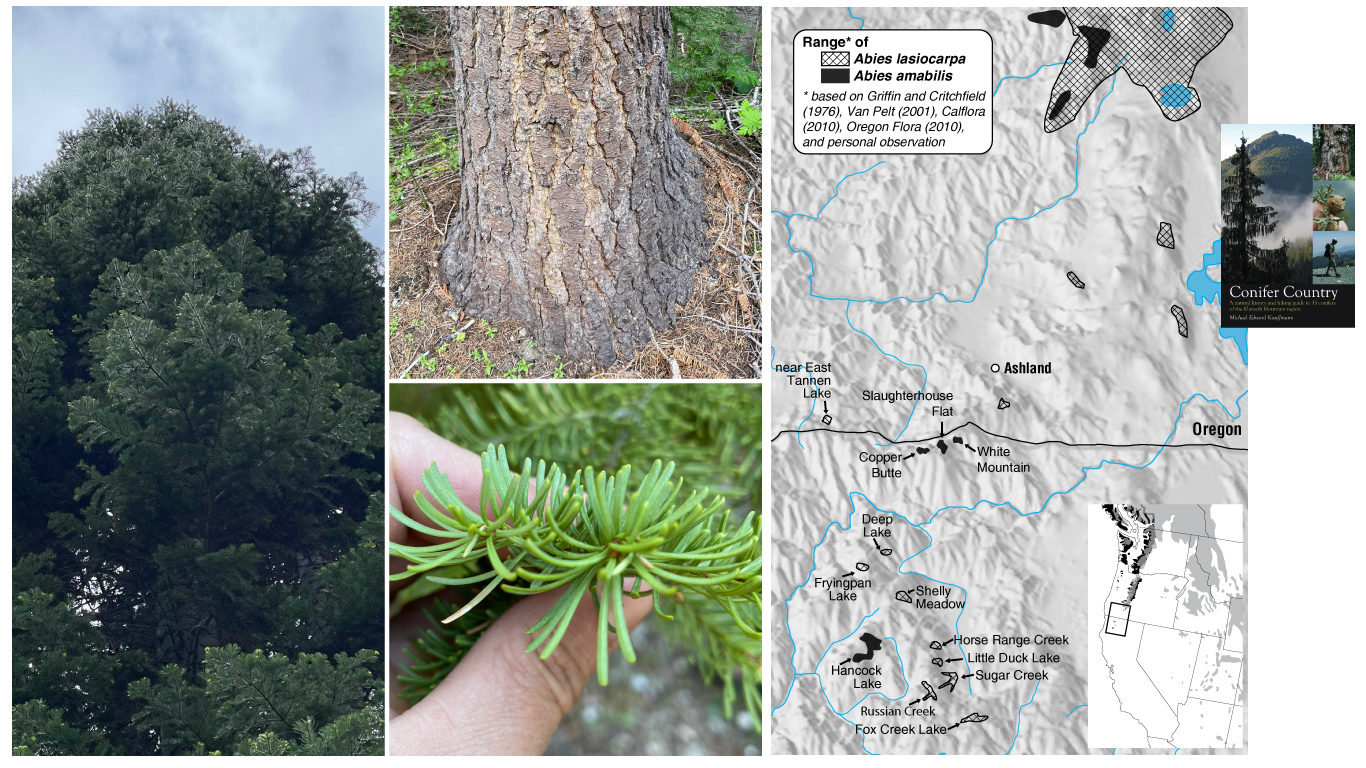
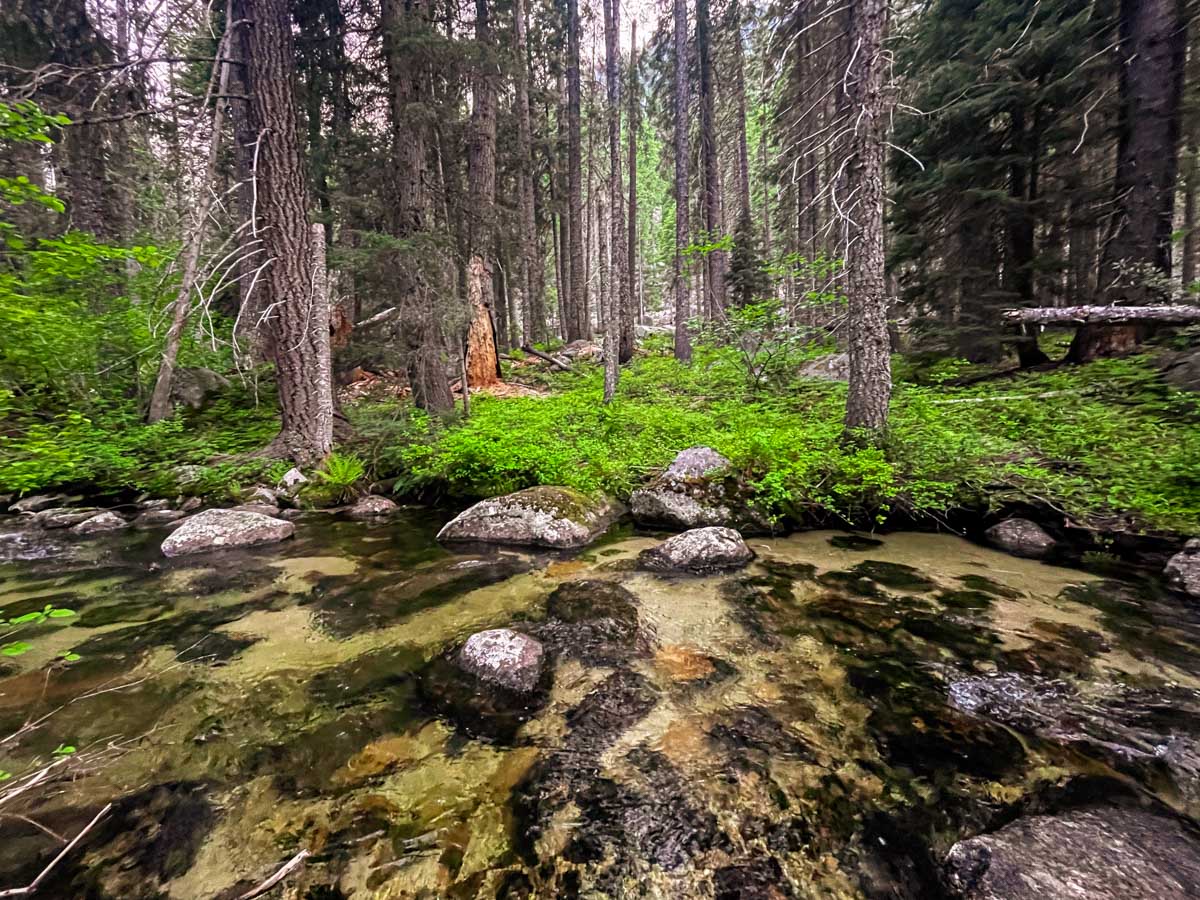
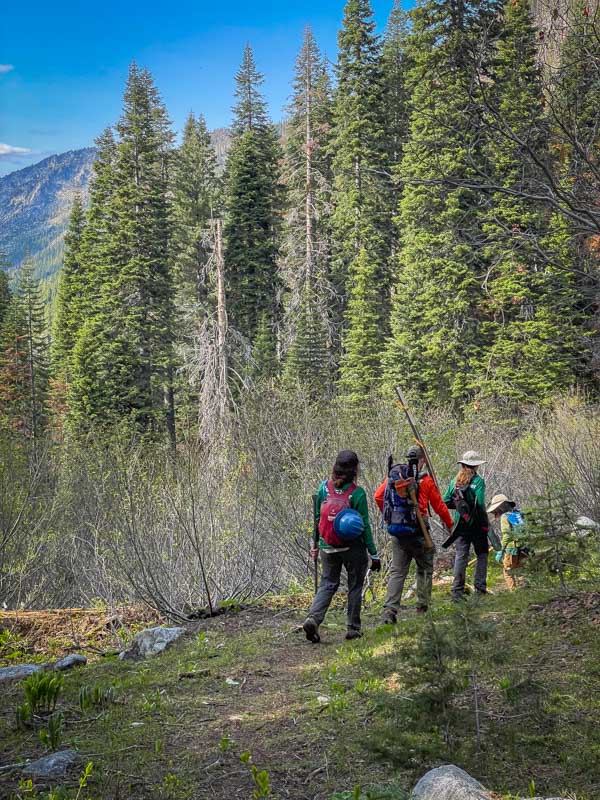
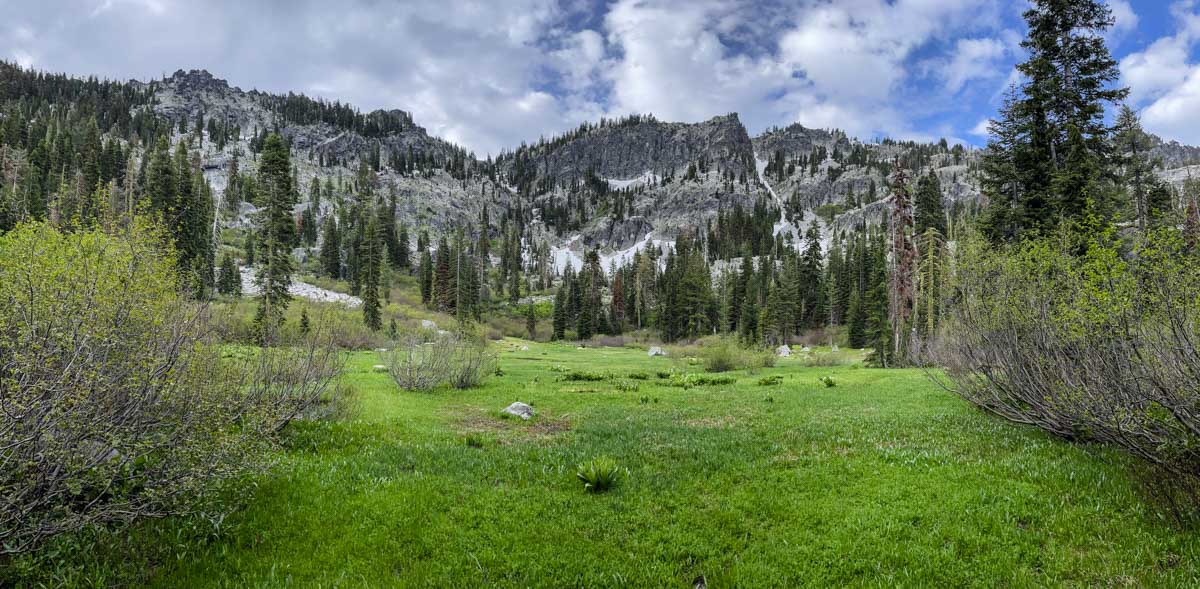
Engelmann spruce (Picea engelmannii)
Growing in every mountain range of considerable size in western North America except the Sierra Nevada, the Engelmann spruce is well known to high country adventurers—outside of California. Like the subalpine fir, Engelmann spruce is a common conifer in the Rocky Mountains of British Columbia and Alberta south to the sky islands of Arizona. I have spent a night in the diminutive, southernmost stand in the Chiricahuas. The forest all around was ravaged by a fire in 1994 but the spruces survived. They also grow through the Cascades into southcentral Oregon and then south of this contiguous range in several fragmented populations in California. While it is unclear exactly when the Engelmann spruce arrived in the Klamath Mountains, it is believed Engelmann spruce and subalpine fir are “recent” Holocene arrivals.
All is not well in Engelmann spruce stands across the West. Large stands are being decimated by the spruce beetle (Dendroctonus rufipennis). While the species is native, climate change is boding well for the beetles and not spruce. This species is the most significant natural mortality agent of mature spruce and large outbreaks are occurring from Alaska to Arizona. It appears California’s Engelmann spruce are also under attack as the Blake’s Fork stand in the Russian Wilderness is witnessing ~60% mortality over the past few years from what I believe to be spruce beetles. More monitoring is needed.

